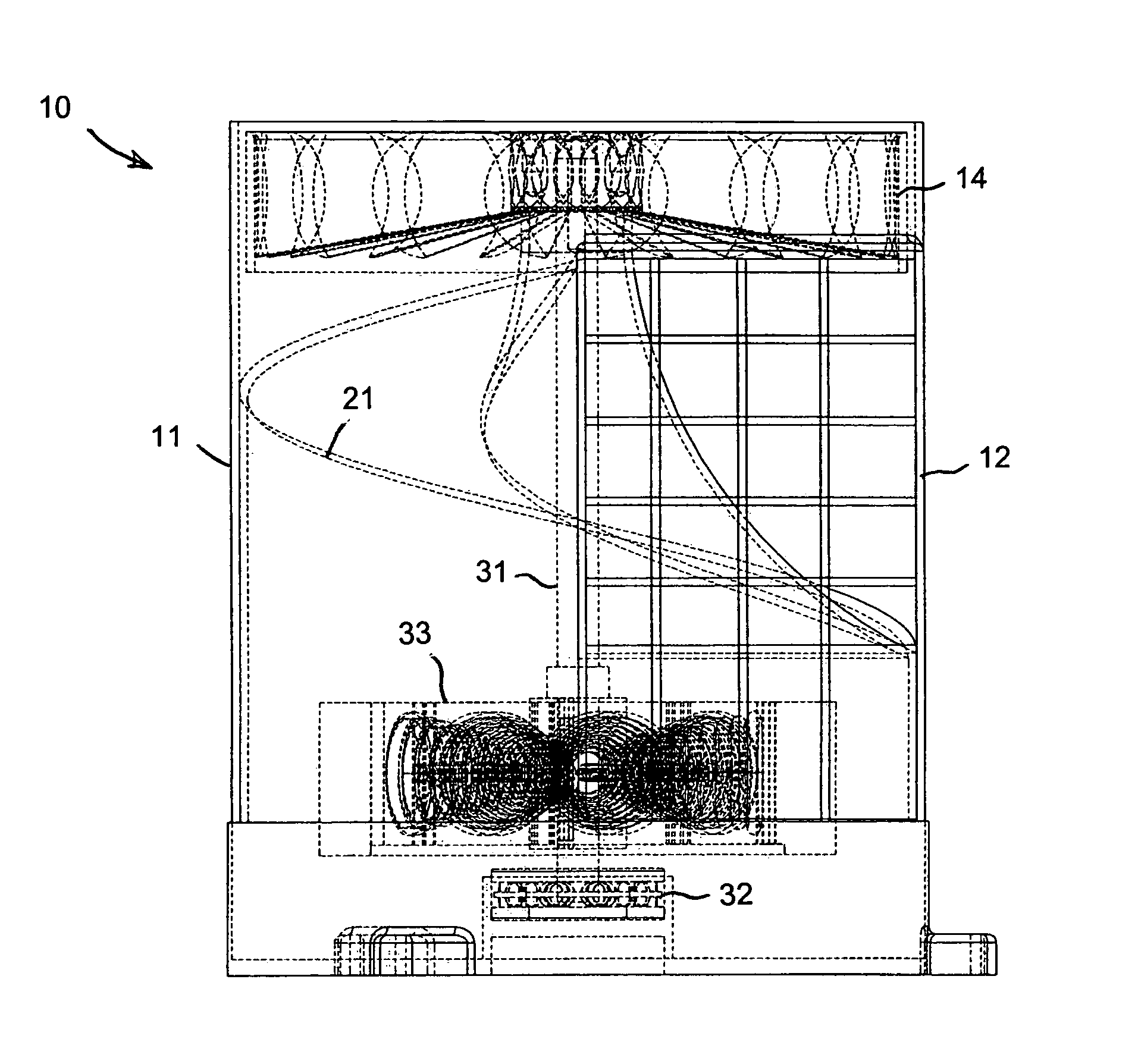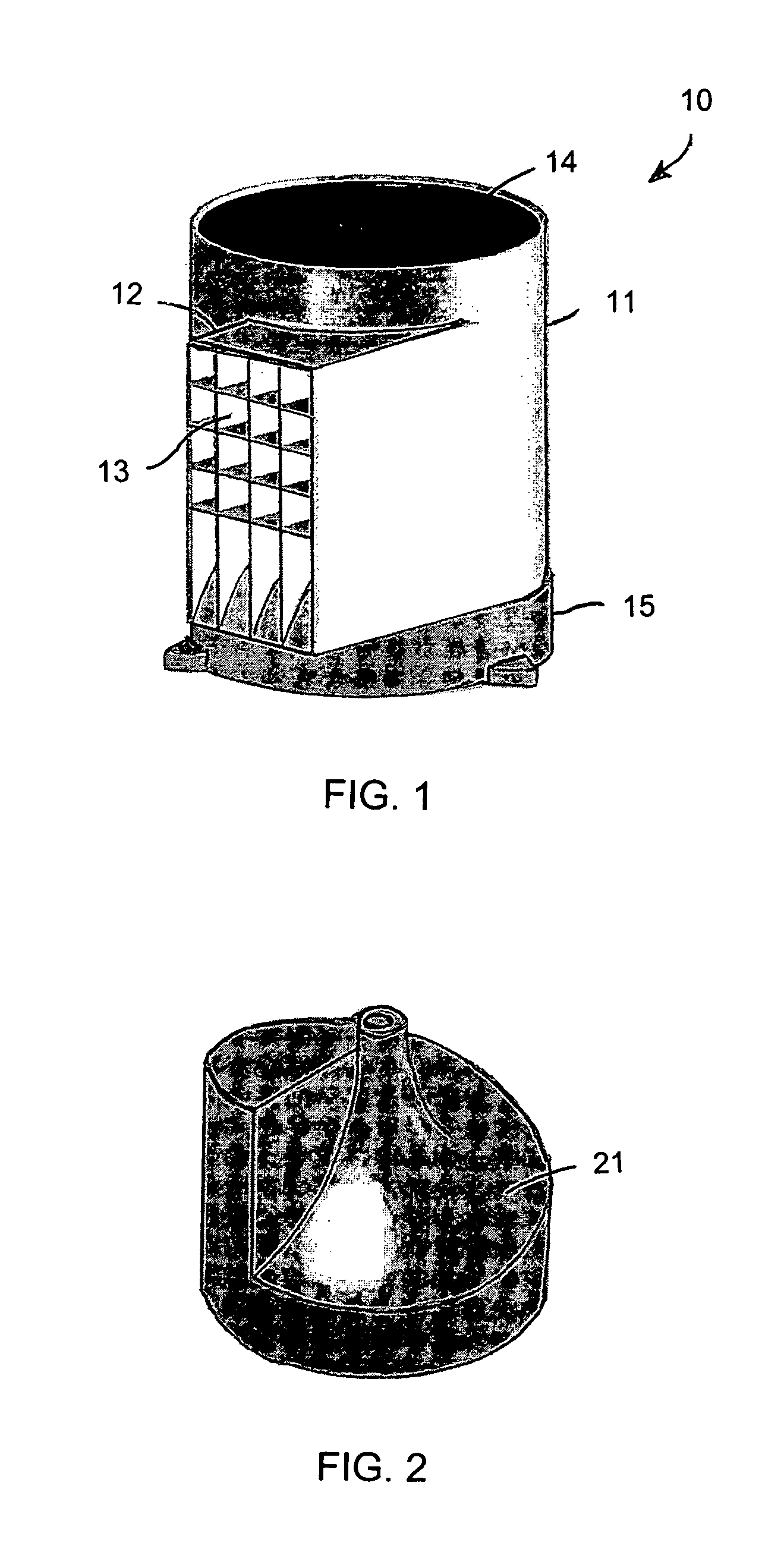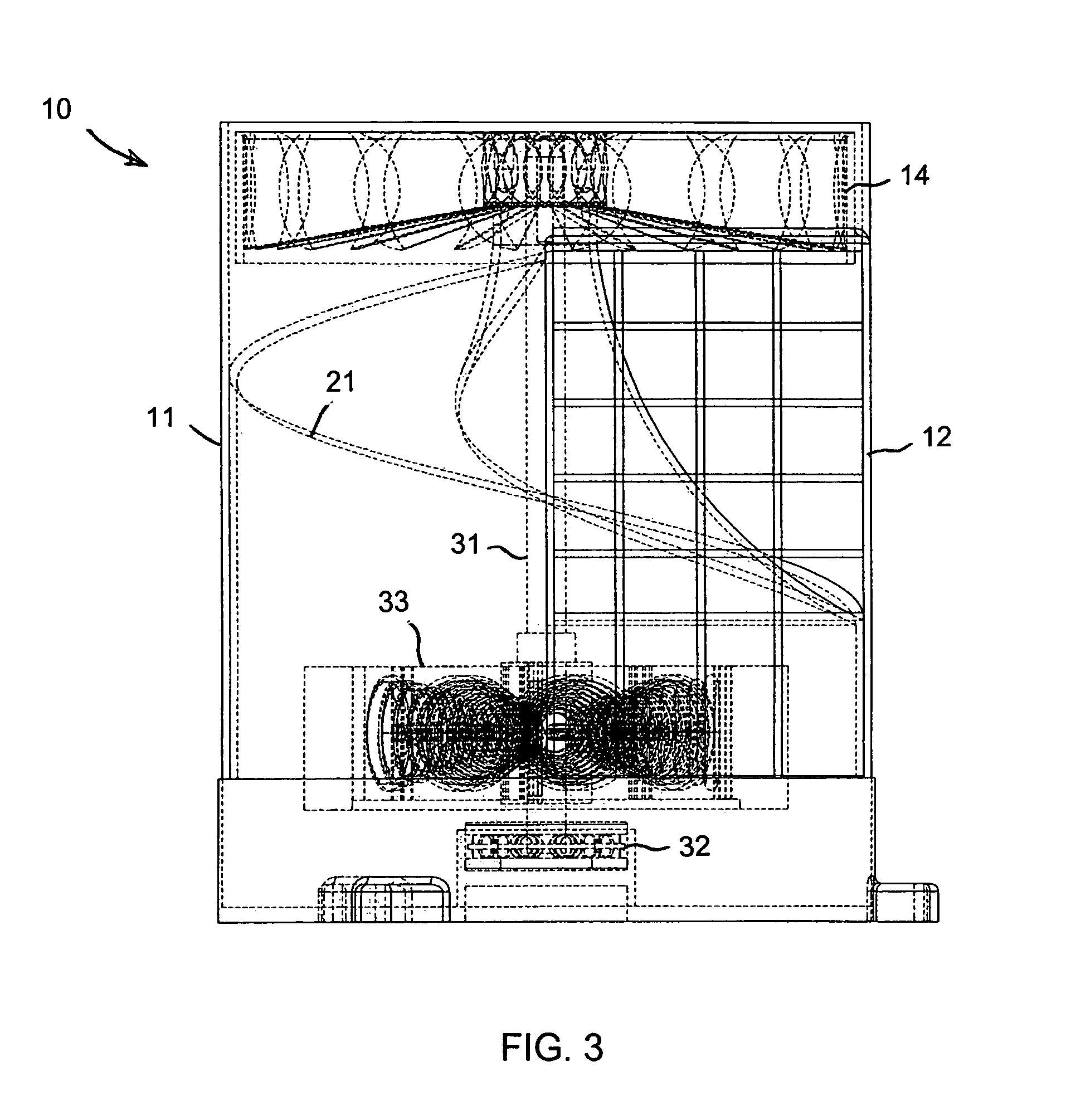Vehicle-mounted generator
a generator and vehicle technology, applied in the direction of electric generator control, machine/engine, renewable energy generation, etc., can solve the problems of low efficiency of solar cells, no practical design has been developed for utilizing this alternative power source, and major permanent environmental changes, so as to prolong the battery life and improve the fuel efficiency of the motor vehicle.
- Summary
- Abstract
- Description
- Claims
- Application Information
AI Technical Summary
Benefits of technology
Problems solved by technology
Method used
Image
Examples
Embodiment Construction
[0024]The present invention is a high-efficiency generator that mounts on a moving vehicle and, in one embodiment, generates mechanical or electrical energy from the relative wind created by the combination of the ambient wind and the motion of the vehicle. In another embodiment, the present invention mounts on a water-borne vehicle and generates mechanical or electrical energy from the flow of the water created by the motion of the vehicle. The terminology utilized herein generally addresses the wind-powered embodiment, although the description is also applicable to the water-powered embodiment. In either embodiment, the energy generated by the invention may then be utilized to directly perform work, to power an electric motor, or to recharge one or more batteries.
[0025]FIG. 1 is a perspective view of the generator 10 illustrating a housing 11 in one embodiment of the present invention. The housing is generally cylindrical, and mounts at its base to a vehicle. An air inlet 12 is at...
PUM
 Login to View More
Login to View More Abstract
Description
Claims
Application Information
 Login to View More
Login to View More - R&D
- Intellectual Property
- Life Sciences
- Materials
- Tech Scout
- Unparalleled Data Quality
- Higher Quality Content
- 60% Fewer Hallucinations
Browse by: Latest US Patents, China's latest patents, Technical Efficacy Thesaurus, Application Domain, Technology Topic, Popular Technical Reports.
© 2025 PatSnap. All rights reserved.Legal|Privacy policy|Modern Slavery Act Transparency Statement|Sitemap|About US| Contact US: help@patsnap.com



